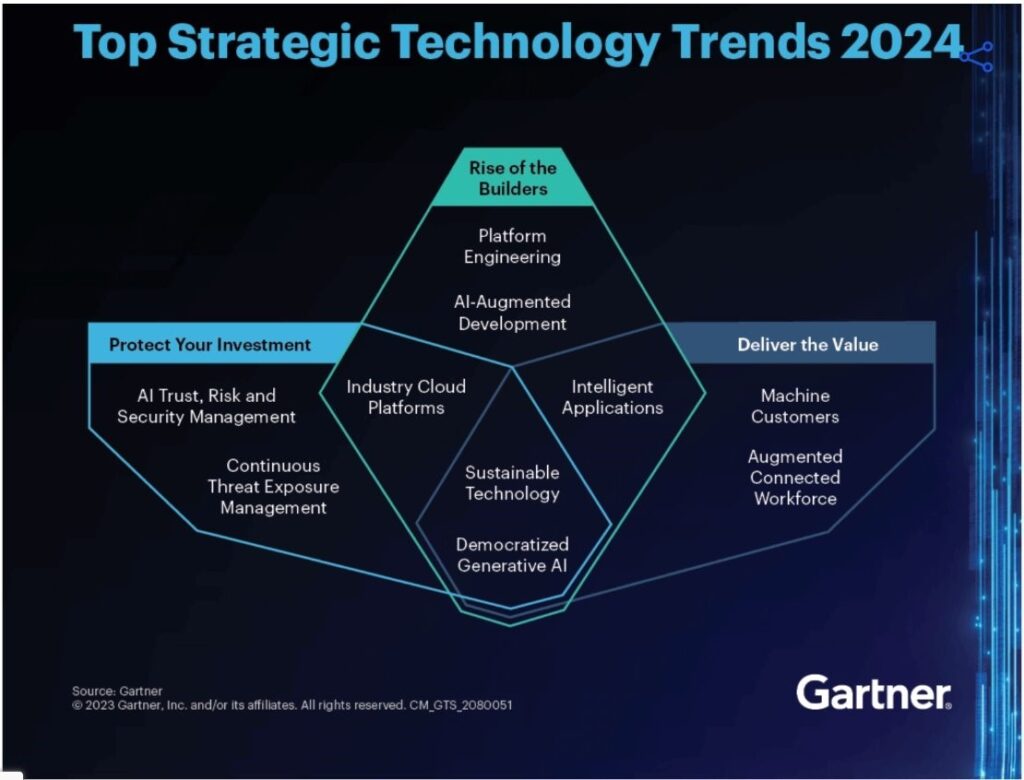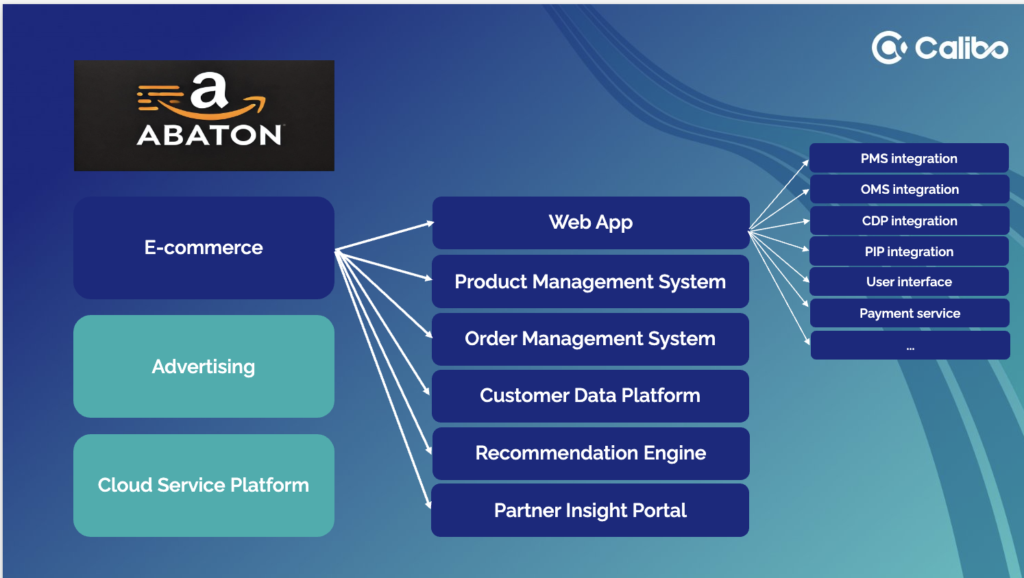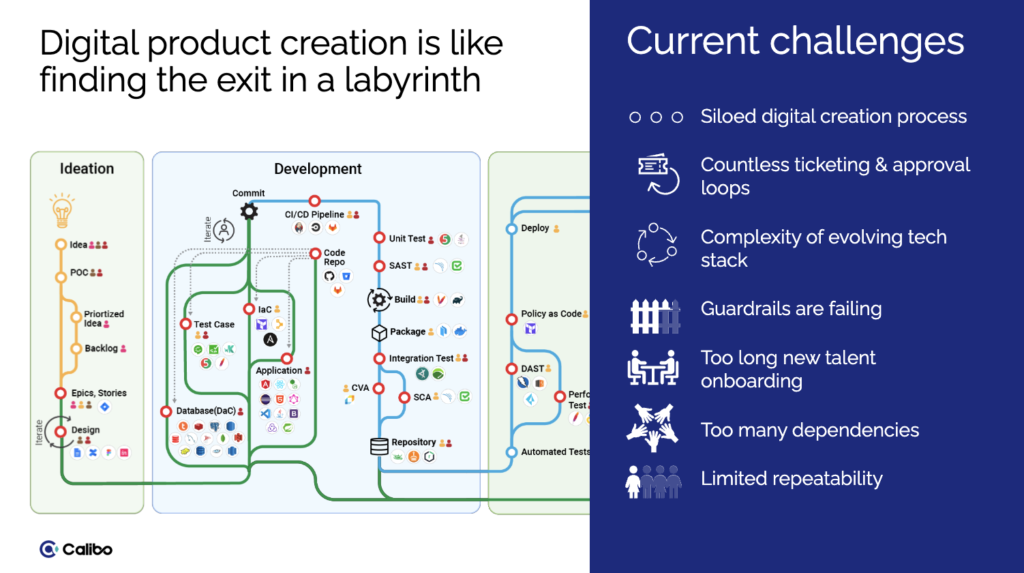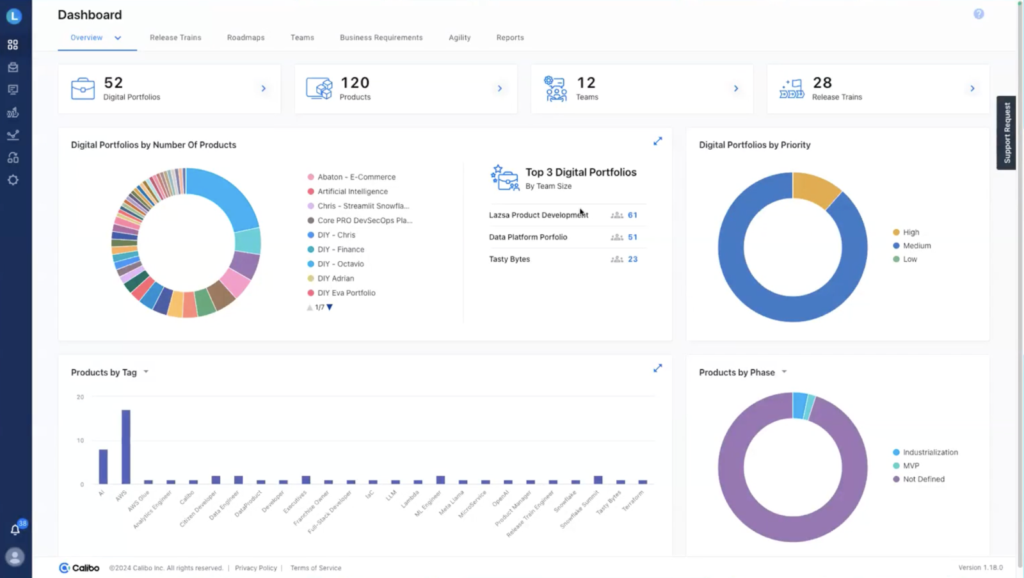

Summary
The blog underscores how platform engineering—calibrated to balance speed, governance, and collaboration—can transform digital value creation across all roles, from executives to developers.
By addressing pain points like delayed access, approval bottlenecks, and lack of visibility, platform engineering helps teams “float” instead of “sink,” enabling them to move faster while maintaining quality.
Action points: map out role-specific impediments, introduce platform engineering practices (like self-service pipelines and centralized governance), integrate observable tooling to improve transparency, and pilot the approach with one department before scaling for enterprise-wide impact.
Marcel Kintscher, our Sales Engineering Consultant, recently hosted a webinar where he detailed how to accelerate digital value creation, with the groundbreaking platform engineering approach. This will transform the end-to-end digital and data product development lifecycle across industries.
In our recent webinar, he emphasized its tangible benefits for organizations and how platform engineering integrates with business value.
The title: “Be the lemon, not the lime!” refers to the fact that lemons float on the surface of the water, whereas limes sink. In today’s fast-paced digital landscape, development teams face the challenge of balancing speed with quality while maintaining seamless collaboration. Learning how to float and not to sink is crucial.
Why is platform engineering important?
Platform engineering is a strategic discipline focusing on developing and maintaining foundational platforms that support software development and operations.
Marcel highlighted the necessity for a new platform engineering paradigm, stressing its role in enhancing organizational efficiency through seamless digital value creation. Particularly within enterprise environments, where complexity is often the norm, an organized approach to platform engineering can make a significant impact.
What are the key pain points in digital development?
In his insightful analysis, Marcel broke down the significant challenges faced by organizations, categorized into four main personas: executives and product owners, platform owners, data and software professionals, and the organization at large.
- Executives and product owners: Struggle with visibility regarding the full digital value process and project timelines. A clear, comprehensive overview is essential for strategic oversight and decision-making.
- Platform owners: Often swamped by manageability issues, dealing with numerous access requests and approval loops that hinder efficiency.
- Data and Software professionals: Their productivity is hampered by access delays and cumbersome environment setup, taking time away from their core focus—coding and development.
- Organizations as a whole: Face efficiency challenges in maximizing output with available resources.
Gartner has highlighted platform engineering as one of the key technology trends for 2024 and beyond and called it the ”rise of the builders.”
The Calibo platform has also been mentioned numerous times by Gartner in the past couple of years.

Marcel illustrated Calibo’s integration as a seamless process by using the example of a fictitious organization, Abaton, with diverse business branches and digital demands.
If you think of those branches, each one of them will have many digital products and services that are developed and used.

If we look at e-commerce and its components, we can see that it will have to have a web app, and a product management system, an order management system, and a customer data platform to consolidate all their customer data, and probably a bit of demographic information, and more.
In the webinar, Marcel goes through these components in detail (watch the full webinar recording here).
We basically have a number of high-level products which will consist of smaller micro-services. When we look at digital value creation, we see the concept of API driven architecture and micro services driven architecture.
Let’s imagine now, how would that actually look like in today’s landscape?
If we were to implement all of these components with the magnitude of tools available and then produce the environment we have today.
It’s probably fair to say that it will feel pretty much like finding the exit to a labyrinth. If we look at the end-to-end product development lifecycle, we can see thousands of tools involved. Be it databases, application frameworks, tools to govern the CI/CD pipeline and so on.

Today, there are so many different options available to deploy technology, be it as infrastructure as code or with cloud services versus on premise servers, and so on.
That’s exactly what leads to those challenges that companies are seeing today which include a siloed digital creation process, countless ticketing and approval loops, too many dependencies and so on.
Many companies try to establish guard rails for what developers can use, but because developers are suffering from very long ticketing and approval processes, they sometimes find ways to circumvent those guard rails and instead choose to work with other technology. Simply to be able create value.
Looking at all those challenges, that’s exactly Calibo’s mission: to solve all those problems as one platform. Let’s take a look at how this mess would completely change into a seamless process when you orchestrate in Calibo.
How does Calibo accomplish this transformation?
1. Single pane of glass for executives: Calibo provides an overview dashboard showcasing digital portfolios, offering a clear snapshot of ongoing projects, release timelines, and project statuses.
2. Product development lifecycle management:
- Portfolio overview: Drill down into portfolios for detailed insights into ongoing products, tied to specific business branches.
- Feature roadmap: Offers a timeline view, aiding product managers in tracking project progress and addressing delays.
3. Defining business requirements:
- Utilize integrations like Jira for capturing and linking user stories and business requirements. This streamlined approach ensures transparency on what needs to be delivered.
4. Design artifacts development:
- Solution architects and UX designers create design artifacts, synchronized with platforms like Confluence, to guide development teams.
5. Development and deployment:
- Data Pipeline Studio: Provides a platform for building and viewing data pipelines, showcasing live deployed applications.
- Self-service deployment: Developers self-provision environments, significantly reducing delays caused by traditional ticketing systems.
6. Configuration and integration:
- Technology stack integration: Calibo integrates with over 150 technologies, allowing seamless incorporation into existing or new tech stacks.
- Guardrails and standards: Platform teams set standards for tool usage and access, automating compliance and ensuring consistency across projects.
7. User management and team setup:
- Role-based access: Define platform and product roles to streamline user access to necessary tools and resources.
- Team collaboration: Create fusion teams with distinct role assignments, enhancing their ability to develop cohesive digital products.
8. Real-time CI/CD integration: Calibo integrates with tools like Jenkins to continuously monitor code changes, ensuring efficient and reliable deployments.
9. Monitoring and Iteration: With Calibo’s overview tools, track changes and iteratively improve projects, much like refining a Formula 1 race strategy for improved performance.
To see the full explanation and how this is achieved in Calibo, please see the full webinar recording here.
Key takeaways
- Centralized visibility: provides a clear, comprehensive view of digital portfolios and project lifecycles, enhancing decision-making for executives and product owners.
- Efficient resource management: platform owners can streamline manageability with reduced bottlenecks, leading to better utilization of human and technological resources.
- Boosted productivity for professionals: developers and data professionals gain quick access to necessary tools, minimizing downtime and focusing on developing code.
- Enhanced organizational efficiency: organizations become more agile and efficient, obtaining more output with consistent or reduced input.
In conclusion, Calibo’s platform engineering approach is not just a technological advancement but a strategic enabler for enterprises looking to enhance their digital value creation.
By integrating diverse technological tools and processes within a cohesive framework, Calibo redefines efficiency and innovation in the development lifecycle.

For those contemplating a move to the cloud or adapting to a rapidly evolving tech environment, Calibo provides a robust, future-proof solution tailored to meet these challenges head-on. It offers enterprises the ability to leverage their digital ecosystem fully and to innovate sustainably and efficiently.
Learn more here.
FAQ
What does the blog mean by “be the lemon, not the lime”?
It’s a metaphor for organizations that rise and thrive (“float”) by adopting platform engineering practices, versus those that sink under inefficiency and bottlenecks.
How does platform engineering accelerate digital value creation?
By providing self-service access, embedding governance into workflows, and improving observability, platform engineering removes delays and gives teams the autonomy to deliver faster with quality.
What practical steps should organizations take now?
Identify role-specific bottlenecks, implement self-service pipelines with built-in guardrails, improve transparency with monitoring tools, and pilot the model in one area before scaling across the business.
Trending articles

How Enterprise Architects can get more support for technology led innovation
Enterprise Architects are increasingly vital as guides for technology-led innovation, but they often struggle with obstacles like siloed teams, misaligned priorities, outdated governance, and unclear strategic value. The blog outlines six core challenges—stakeholder engagement, tool selection, IT-business integration, security compliance, operational balance, and sustaining innovation—and offers a proactive roadmap: embrace a “fail fast, learn fast” mindset; align product roadmaps with enterprise architecture; build shared, modular platforms; and adopt agile governance supported by orchestration tooling.

Why combine an Internal Developer Portal and a Data Fabric Studio?
Discover how to combine Internal Developer Portal and Data Fabric for enhanced efficiency in software development and data engineering.

The differences between data mesh vs data fabric
Explore the differences of data mesh data fabric and discover how these concepts shape the evolving tech landscape.

Best practices for developing AI solutions with a self-service platform
Discover how developing AI solutions with a self-service platform can enhance productivity and efficiency in your enterprise.

More from Calibo
One platform, whether you’re in data or digital.
Find out more about our end-to-end enterprise solution.